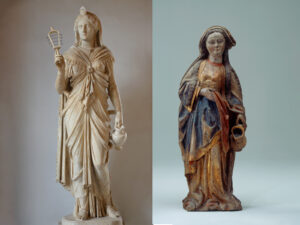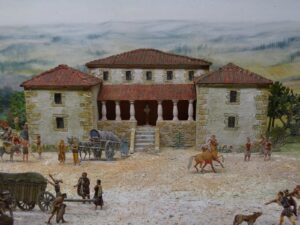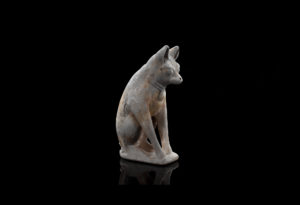
Swiss National Museum
The influential Camilli of Avenches
What became of the Gallic tribes who continued to live in the territory of what is now Switzerland after the Roman conquest? Thanks to Roman inscriptions, we’re able to partly reconstruct the family tree of the Gallic Camilli family, who lived in Avenches around 2,000 years ago.
The story of the Camilli family from Avenches, ancient Aventicum, begins with the death of a person who needs no further introduction: Julius Caesar. After his murder, one of the conspirators, Decimus Junius Brutus, tried to flee Rome. As we are told by the historian Appian of Alexandria (95-165 AD), his escape took him through Gallic territory over the Jougne Pass, which links the French with the Swiss Jura. While crossing the Pass, Decimus Junius Brutus was captured by Camelus or Camilus, the Gallic chieftain who controlled the region, and in 43 BC he was taken prisoner and beheaded on the orders of Mark Antony.
All we know of this Camilus is his name. Little is known about exactly where his tribe lived either. The first inscriptions in which his descendants are mentioned date from the 1st century AD, about a century after the death of Julius Caesar, when Switzerland was already fully integrated into the Roman Empire. Following the conquest of the territory of present-day Switzerland by the Romans, which was completed around 15 BC under Emperor Augustus, the inhabitants of the Helvetian plateau gradually adopted the Roman way of life. Over the course of 50 years, Latin became widely spoken and towns were rebuilt with walls following the Roman model, and decorated with mosaics and frescoes. In the towns thermae, or thermal baths, and theatres were built and typical Mediterranean consumer products such as oysters and dates found their way into the territories north of the Alps. The old Gallic aristocracy held the most important administrative offices of the plateau towns and was granted Roman citizenship. This included the adoption of the three Roman names (tria nomina): praenomen (forename), nomen (family name) and cognomen (byname).
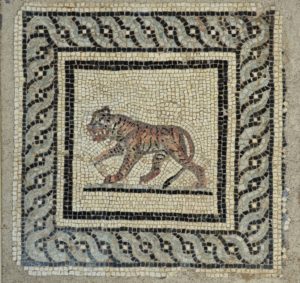
Depiction of a tiger on the ‘palm mosaic’ excavated in Avenches.
Roman Museum of Avenches

Genealogy of the Camilli family from Avenches; the family members referred to in the text are in red.
From Grézet 2002
Thanks to this new naming system and the fact that the Gallic elite learned Latin, researchers have been able to reconstruct the family tree of the influential Camilli family. The family was based in Avenches and, as the surname suggests, must have been related to the ancient Camillus. One representative of this family, who lived in the first half of the 1st century AD, is Caius Valerius Camillus. His name is recorded in an inscription that was found at the Forum Baths, marking the memorial service held in his honour by the civitas – the communities of the Aedui and the Helvetii. Interestingly, the deceased’s will was executed by a woman, perhaps his niece Julia Festilla. The inscription shows not only whose son he was, but also that Caius Valerius was apparently on good terms with the Aedui and the Helvetii, and thus with the two tribes in the regions to the south and north of the Jougne Pass. His name also tells us that this branch of the family was romanised early on. From the imperial era onwards, foreigners often used the nomen of the current emperor.
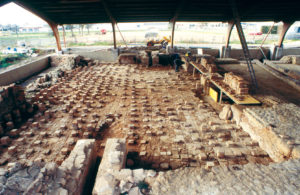
The Baths constructed near the Forum of Avenches.
Roman Museum of Avenches
The most famous and most important representative of the Camilli family is undoubtedly Caius Julius Camillus, who is found in two separate, albeit very similar, inscriptions. One was commissioned by his daughter Julia Festilla, and the other by the citizens of Aventicum. The inscriptions are very illuminating. The almost identical text reads: ‘To C. Julius Camillus, son of C[aius] of the Fabia tribe, priest of the Imperial Cult, Military Tribune of the 4th Macedonian Legion, awarded a pure (silver) spear and a gold crown by Emperor Claudius Germanicus, when he was called up by the Emperor for the Britannia campaign. Julia Festilla, in accordance with testamentary dispositions.’
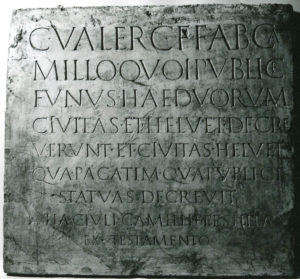
The inscription of Caius Valerius Camillus was discovered near the Forum Baths. It reads: ‘To C. Valerius Camillus, son of C. of the Fabia tribe, for whom the civitas of the Aedui and the Helvetii conducted official funerary ceremonies and to whom the civitas of the Helvetii dedicated statues on behalf of the pagus and on behalf of the community. Julia Festilla, in accordance with testamentary dispositions.’ Copy.
Swiss National Museum
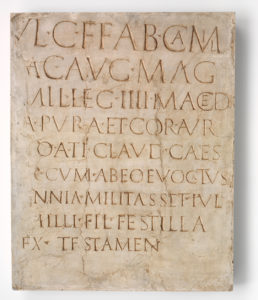
Inscription honouring Caius Julius Camillus. Copy.
Swiss National Museum
Here we also learn the name of his father: Caius. And we have a nomen: Julius. These inscriptions thus enable us to reconstruct the life of this figure. Julius Camillus joined the Roman army at a young age. He enjoyed a glittering military career and became one of the few military tribunes of Gallic origin, one of the most senior commanders of the cavalry in the Roman army. In 43 AD he was called to arms by Claudius for the Britannia campaign, and then awarded the highest honours (silver spear, lance and gold crown). Julius Camillus could at this point have gone to Rome and begun a career as a senator, but he chose instead to return to Aventicum and devote himself to local politics as an Imperial priest. Interestingly, both inscriptions are signed by the daughter and the colonia. That means he must have died at a very old age, because it was not until 71 AD, after the bloody civil wars of 68-69 AD, that Emperor Vespasian elevated Aventicum to the status of a colonia.
Julius Camillus’ daughter Julia Festilla was likely also an influential figure. In accordance with Roman tradition, Julia inherited the name from her father. Based on a surviving inscription, we know that she served as an Imperial priestess and must have lived somewhere near Yverdon.
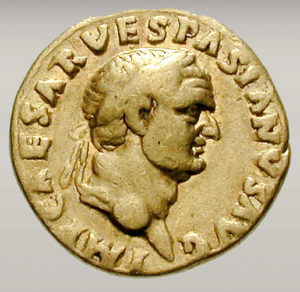
Gold coin featuring the image of Vespasian.
Swiss National Museum

Inscription in honour of Julia Festilla: ‘To Julia Festilla, daughter of C. Camillus, first Imperial priestess distinguished citizen [in] thanks for her service. The people of Eburodunum (Yverdon).’ Copy.
Swiss National Museum
Thanks to these inscriptions, we can now reconstruct various events relating to the Camilli and certain family ties. Their roles as Imperial priests underline the status they must have enjoyed in the city of Aventicum in the 1st century AD. However, the Camilli family is not the only example of a Gallic clan occupying high office in the municipal administration. Between the middle of the 1st century BC and the middle of the 1st century AD, the Romans in fact made efforts to maintain a balance of power on the territory of present-day Switzerland by incorporating the Gallic aristocracy (including women) into the Roman administrative system, thus enabling the elite to retain their rank and privileges.

